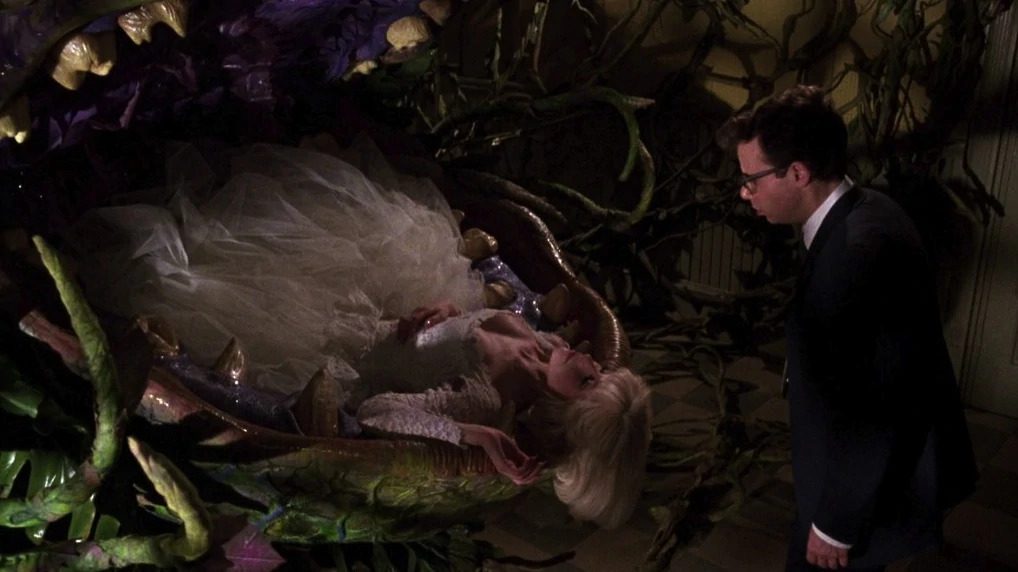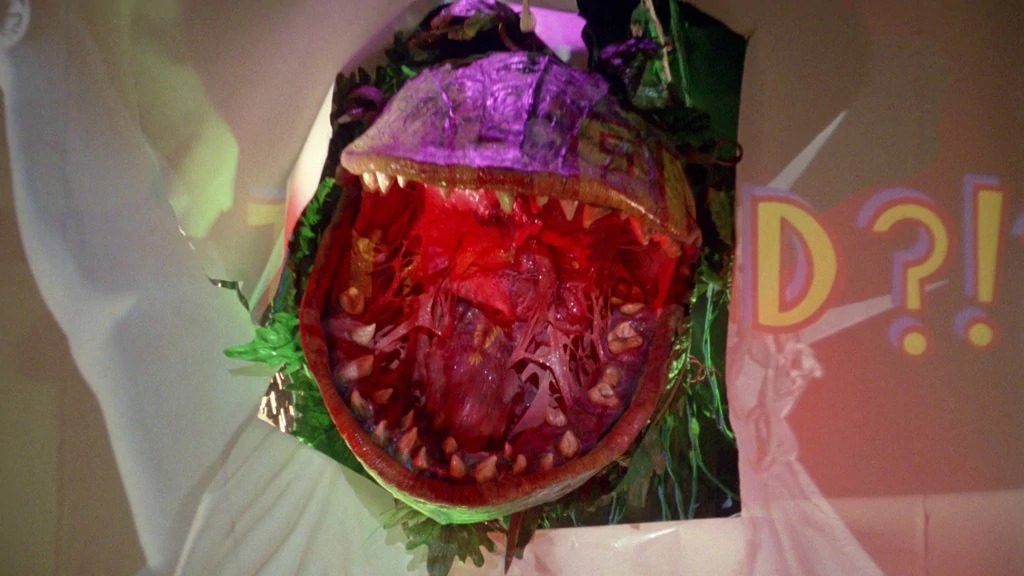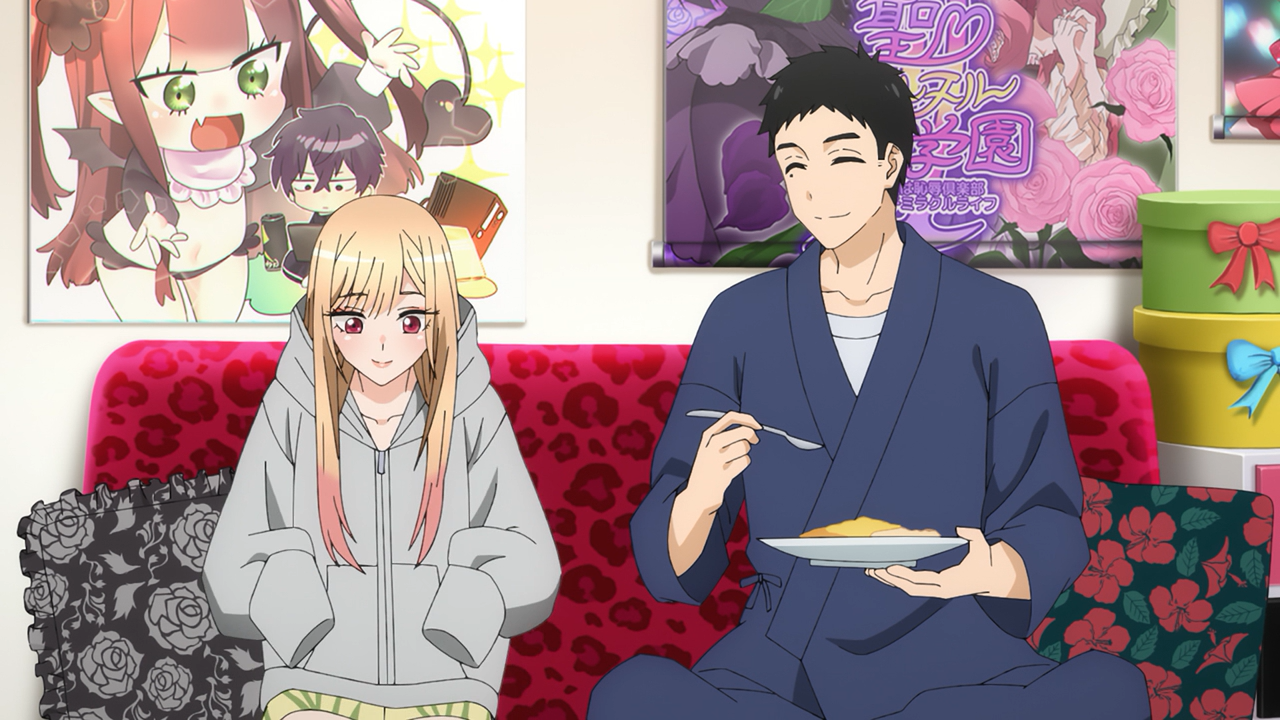Audrey II is defeated in the 1986 theatrical version of Little Shop of Horrors, but the alien plant takes over the planet in the original ending. It’s commonly argued that Hollywood has run out of unique ideas, which is obviously untrue. Original films are still made, but they don’t have the same cinematic and marketing support as the latest superhero blockbusters. Still, if you want to criticize the film business for being unoriginal, go no farther than Little Shop of Horrors.
Little Shop of Horrors was released in 1960 as a horror/comedy movie directed by B-movie icon Roger Corman, and it marked one of actor Jack Nicholson’s debut big-screen performances. Little Shop of Horrors was reworked into an off-Broadway production in 1982, which was still a horror/comedy but also a rock’n’roll musical. This musical was made into a movie starring Rick Moranis and Ellen Greene in 1986, which is now the most generally seen version of the drama.
What Happens In Little Shop Of Horrors Original Ending?
The original ending depicted mankind’s apocalyptic greed. Richard Conway’s amazing miniature effects and puppet work make for an adventurous sequence. Audrey is virtually eaten by Audrey II, and Seymour discovers her wounded and on the verge of death. Audrey approaches him and asks him to offer her to the plant. Seymour walks to the roof to commit suicide while Audrey II slowly devours her, but he runs into a salesman who offers to sell miniature Audrey II plants in every home across America. He rushes to Audrey II, who sings a cruel song and assaults Seymour — even with a handgun! Audrey II traps Seymour with his vines at the end of the song, laughing evilly as he swallows him whole.

In the next scene, a Greek chorus girl group sings grimly of Audrey II’s global dominance in front of a large American flag. A montage depicts a chaotic crowd of individuals screaming for their own Audrey II plants. Then we watch a huge Audrey II rip its snake-like branches through an elderly couple’s walls and bed, and its head break through a nightclub’s wall. Outside, a giant plant hangs like a toy across the Brooklyn Bridge, while two others smash through the roads of New York City, throwing vehicles and wreckage everywhere as the people scream and run in despair.
Another Audrey II eats a railway that flies right into its mouth. Buildings go up in flames. The glass is shattered. Cars collide. The fires are blazing. The notion that the plants are causing all of this death and ruin while giggling maniacally adds to the scene’s chill factor. A couple of Audrey II plants climb on top of the Statue of Liberty, their thundering laughter resonating while the army shoots them ineffectively from below while a helicopter circles them. Finally, Audrey II slams onto the movie screen, hungry, red mouth devouring the audience, a homage to the stage act where the puppetry and its branches reach into the audience.
Little Shop Of Horrors Original Ending Explained
In an interview, filmmaker Frank Oz stated that the original dark ending’s rejection came from the difference in format. He theorized that film audiences were more empathetic to Audrey and Seymour because of the cinematic close-up rather than the broad static shot of the stage. Their deaths were easier to accept in the stage version since they happened faster, and you knew they’d reappearance in the curtain call. Frank Oz used point-of-view images throughout the film to show their helpless, scared expressions as they are brought inside Audrey II’s enormous, jagged mouth. This makes it easy to picture the horrible terror they’ll encounter once they’re inside. Their end is painfully slow, and it’s broken by Audrey II’s greedy eating.

Rick Moranis and Ellen Greene’s engaging performances and the romantic connection were one of the other crucial factors. Audiences adored them and wished for them to win over Audrey II’s wickedness rather than submit to it. Moranis plays a charming, naïve, and clumsy Seymour who accidentally murders his victims. Seymour is a bit more sinister and quickly influenced by the sparkles of wealth and fame in the theatrical play. Audrey’s death is considered a justifiable result of his conduct. Although “Little Shop of Horrors” is a stylized film with stage elements, theatre shows allow audiences to readily accept their disbelief. The stage show’s ending is sad, yet the over-the-top silliness provides comfort to the audience.
Because of the film’s realism, the harsh representations of the protagonists meeting a horrible end, followed by the ruin of the contemporary world that surrounds it, were too much for those audiences and critics to bear. The special effects were just too fantastic, creating a dark and terrifying depiction of humanity’s final days. Audrey II’s takeover is hinted at in the stage production and mostly left to the audience’s imagination. The level of violence and damage caused by the cosmic plant has never been seen before. The frightening scenario being depicted on film in such a detailed manner is likely to have disturbed viewers.
Also Read: Compliance Ending Explained: Girl Assaulted By A Prank Caller




